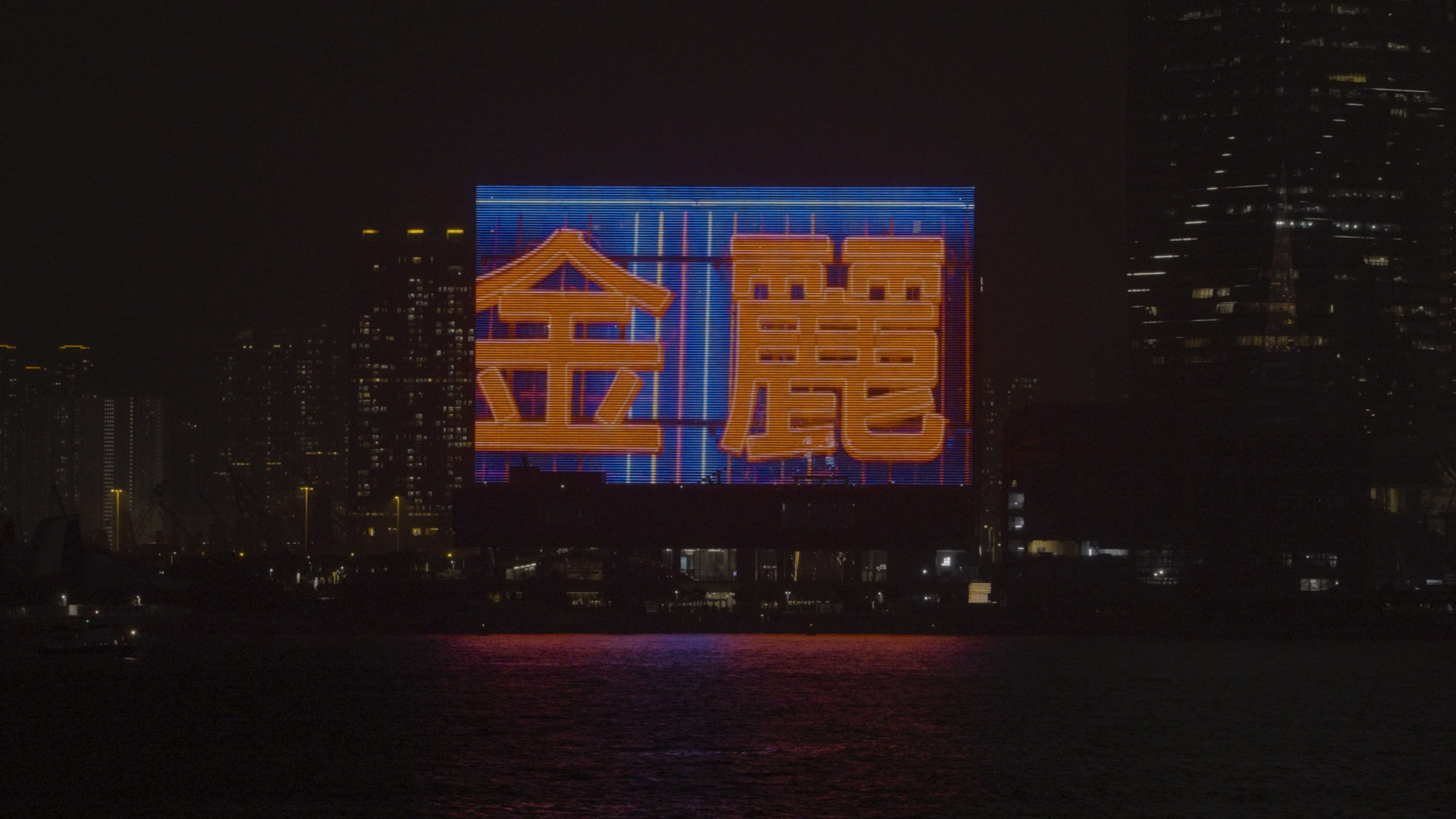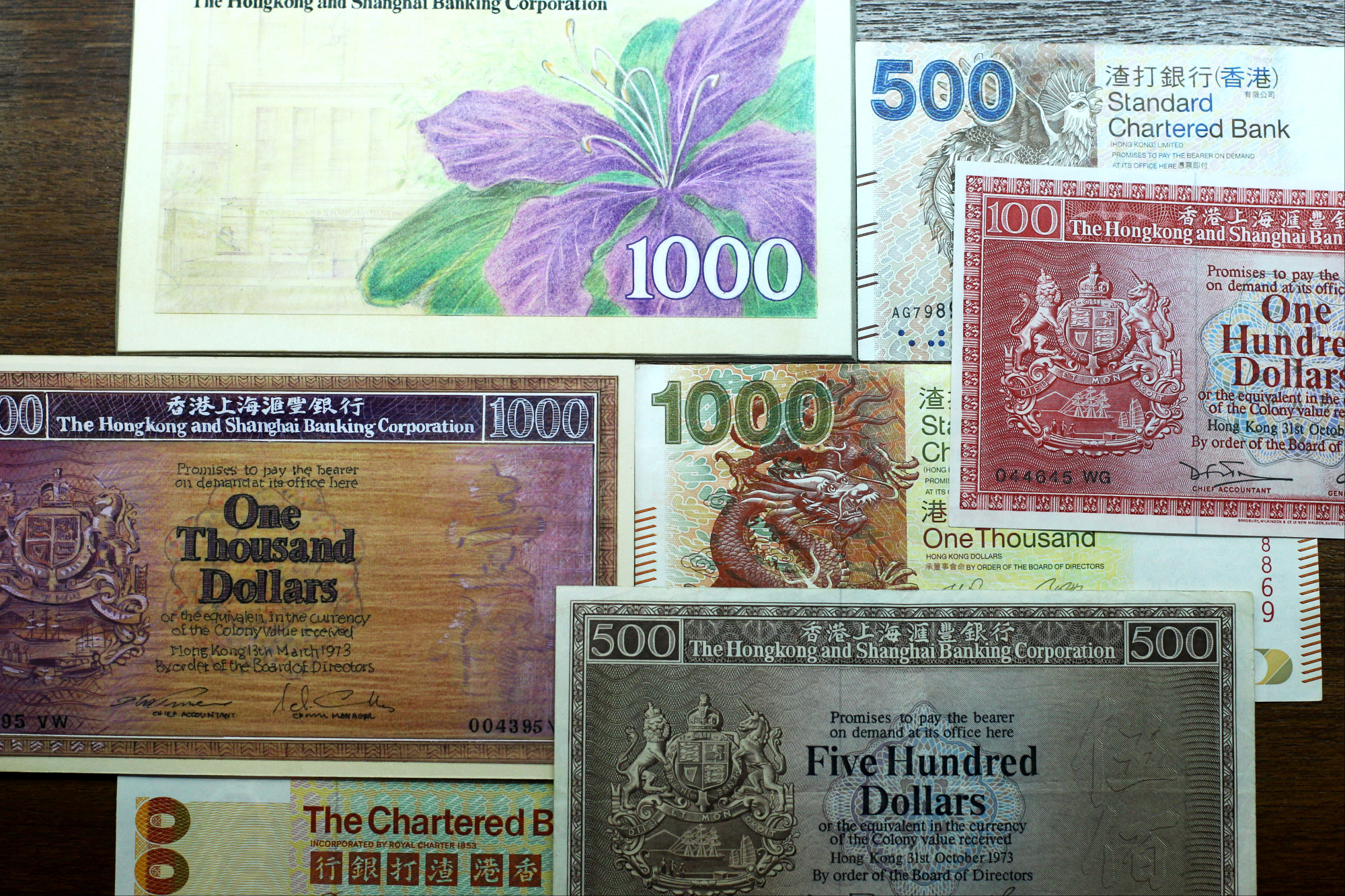
Morris, who wasn’t present, has been making films about cities since 1998. Her first, Midtown, was shot in New York on a single day and is nine minutes, 36 seconds long.
From the beginning, her fascination with shiny architecture, anonymous humans, urban transport and corporate power was evident; since then, she’s shifted her gaze further afield – to Washington, Miami, Paris – and the work has become longer.
Does M+ show based on East Asian ink landscapes go too far or not far enough?
Does M+ show based on East Asian ink landscapes go too far or not far enough?
ETC, her 16th film, clocks in at 79 minutes and 19 seconds, which is shorter than 2008’s Beijing (84 minutes and 47 seconds) and 2012’s Rio (88 minutes and 33 seconds) but can feel lengthy enough when you’re trying to focus on it while floating in the harbour.
A Morris film has no dialogue but relies on music, composed by her ex-husband, Liam Gillick, to usher viewers through its landscape. Each note is insistent, often portentous, occasionally nerve-shredding.
As the M+ can’t have a soundtrack blaring out over West Kowloon, its nightly screening of ETC must be silent. (At Tai Kwun, the soundtrack will be played.) The ferry, however, had its own easy-listening playlist – the kind you hear in malls and lifts. Morris, who is fluent in art-speak, would probably call this cognitive dissonance.

After the show, some passengers felt that the boat had sailed too close to shore to give proper perspective. Perhaps the biggest drawback to the evening was the harbour itself: the backdrop is so compelling it feels perverse to ignore it.
On the M+ Facade, a colourful sequence of container terminals, Sunday helpers, scaffolding, neon etc. etc. flickered on. Yet the eye couldn’t help wandering to the glowing reality beyond.
A few evenings later, when I went back to the harbour to view the film from land, a sly fog had crept over the water and – as if to reinforce the point – blanketed M+ and its facade. In the end, M+ sent a link and I watched the film in a darkened room, pen in hand, no distractions.

“If I knew there was gonna be music on the boat, I would have said it should be my music,” says Morris on a Zoom call, in a husky voice that long ago lost its British accent. In this Morris video, the colour consists of her black hair, pink glasses, red lipstick and the only jump cut is when her Russian Blue cat, Kit Kat, leaps into her lap.
Asked about visual competition with Hong Kong, she responds amiably, “Oh yeah. Well, there’s always this. Distraction is a thing artists have to contend with all the time.”

“And when I came, I absolutely knew for sure I would be making a film. It was, as you say, incredibly cinemagraphic, telegenic, whatever you wanna call it. It looked incredibly futuristic, in a way that very few cities in the world look. São Paulo has a little bit of it. Maybe Tokyo has a little bit of it […] Of course, New York is more analogue.”
The moment she sat down after making a speech at the 2018 White Cube dinner, she began planning.

He’d followed her subsequent progress and had been slightly taken aback (“I felt, ‘Hey, wait a minute …’”) when Abu Dhabi got its own Morris film in 2017. Surely Hong Kong should be on her list.
“Obviously, to me, it’s the biggest present you can give a city,” he says. “It’s like being painted by one of the Great Masters.” Now Hong Kong was on her radar – sort of.
The original plan was to do a film on both Hong Kong and Shenzhen, and there was some early preparation.

“We went to Shenzhen, we had access to one of the Tencent buildings,” says Berger. “They were moving in, we walked around with an employee, it was quite fun. Then things changed and she decided – her decision not mine – just on Hong Kong.”
Still, there would be a pioneering spirit of collaboration between M+ – which would acquire the film for its collection and show it on its facade – and Tai Kwun Contemporary, which would show both the film and a painting Morris would create.
The paintings that accompany these films tend to be solid blocks of colour that reference, not always obviously, the city’s architecture.

“Like, you know – many ideas came into my brain about how I could be somewhere without being there,” she says. Eventually, in the spring of 2023, she was able to return and the film was completed.

The title, ETC, stands for Electronic Teller Card, which older readers will remember using at HSBC cashpoints. Early in the film, we see an elderly gentleman mouthing words as Gillick’s music drowns them out; we see his gesticulating hands; we see banknotes; we see annual reports.
“I love Henry Steiner, what a gem,” says Morris.

Isn’t it frustrating for viewers that nothing in the film explains the reasons for his lustre?
“Tobias will write a press release. And you’re gonna write an article where you’re going to explain who he is.” (Brief bio: Henry Steiner, 90, born in Austria, came to Hong Kong in 1961, created the logos of many Hong Kong companies, including HSBC, for which he also designed currency. M+ will hold a Steiner exhibition in June.)
“There’s many different approaches to my work and it’s, like, I can’t be concerned if somebody doesn’t catch the Henry Steiner reference,” she says.


Morris, who has a wry sense of humour not always apparent in her films and who occasionally sounds like a parody of a New Yorker, adds, “Everybody should understand who he is and if they don’t, they should wake up and smell the coffee.”
More caffeine-inhalation may be required for another unidentified elderly gentleman who is filmed silently speaking in an exquisite garden.
He is James Kinoshita. (Bio: Canadian-Japanese architect, born 1933, came to Hong Kong in 1960, designed many buildings including Jardine House and the now-demolished Hong Kong Hilton.)

“Jim was involved in the development of hotel culture, which I love,” she says. “All of these forces were conspiring to make Hong Kong what it was.”
Morris grins. “My films are a study in cognitive dissonance. What can I say? … I like this broken, fragmented narrative. To me this is, like, what is sort of magical about a place – not knowing everything.”

“Sometimes an outsider can give you a new view of the city,” says Berger.
“There’s a reason why most newspapers send foreign correspondents to places … You have to see these films in a network of films. You and I look at it totally different than if we look at the LA or Chicago films because it’s our city. We shouldn’t even talk about it because we’re too close to it.”
Perhaps. But when Morris says again, as she did in our 2018 interview, “I think it was [conceptual artist] Lawrence Weiner who said artists are expensive baggage, which I love, but it’s not really true, we’re actually sort of cheap baggage,” she conjures up an unfortunate association with carpetbaggers, those outsiders arriving with their luggage to seize opportunity.

She’s clearly fascinated by luxury goods; her 2014 Paris film, Strange Magic, was commissioned by LVMH and made while the Frank Gehry-designed Fondation Louis Vuitton was being built.
Morris is often described as an artist who deconstructs global consumer culture but it can also look as if she’s in danger of being seduced by it.

The film she made before ETC was Sakura (2018), which was shot in Osaka and commissioned by the Japanese city’s Nakanoshima Museum of Art. Isn’t she now a trophy label, a consumer product, herself?
“I don’t see it from the other point of view,” she responds. “I see it from my point of view and my point of view is I’m making a manifesto of the world – the aesthetics of place, the psychology of place, the politics of place.”
YouTube has a video of a discussion about her work during a retrospective she had in Hamburg in 2023. (It’s in English although the artspeak is nearly incomprehensible.)

She’s introduced as someone who “creates a new language of place and politics”, which is odd because you could watch ETC on an endless loop and still be clueless about the political pulse of Hong Kong.
“I definitely think my language is unique to me,” she says. “I do think I have a unique way of putting it together and threading the needle.”
Later, when asked what film stills she’d like to be used in this piece, she says, “I love the wall of stickers from all over the world at the fruit market, it’s a little bit like my suitcase. I love the fish and the cats. I love that scene at Legco – love that! – there’s a lady in a pink jacket who walks right on the green carpet. It’s, like, so beautiful.”
It’s like a cake in the oven. You know when it’s done
Sarah Morris on filmmaking
It is, indeed, visually striking. But, as with Steiner and Kinoshita, you won’t come away any the wiser about the Legislative Council’s history, apart from learning that the day’s debate concerned the registration of medical consumables.
“If an artist paints a city – 10 different cities – he, also, will not grasp every detail and every political moment and every nuance,” explains Berger.
“These are not documentaries. They are feature-length individual takes on cities. Together they portray a time of post-colonisation, you have to see them as a network. They are embedded in connections and maybe one can criticise that only ETC is showing at Tai Kwun.”
‘My life is a string of serendipities’: Hong Kong photo art gallery founder
‘My life is a string of serendipities’: Hong Kong photo art gallery founder
As for what he learned about Morris during their joint venture, he says, “The precision. She brought her own camera lens, it’s huge” – he makes an expansive gesture with his hands. “She is so precise with every shot, every cut, every edit. Every decision is super well thought-out and they are based on a long history of doing it.”
Occasionally during ETC, we see people on the street videoing Hong Kong with their smartphones. Everyone’s a filmmaker nowadays. Does she think her films are getting better?
“I definitely think they’re getting better. I showed the film the other day to Liam and he said, ‘This is another level.’”
After ‘Picasso of the East’ left China, his life was a mystery. Until now
After ‘Picasso of the East’ left China, his life was a mystery. Until now
Yes, but having done the music, he has a vested interest. “It’s important to know that Liam doesn’t make the music to image. He makes the elements of music, let’s say 40 or 50. I think about it emotionally: what’s the temperature? What’s the aura? Then at the end of editing, it becomes a composition.”
For ETC, Morris had 20 terabytes of data to sort through before presenting Hong Kong’s aura to itself.
“I mean, it was insane. We thin it out, we thin it out, then we become brutal. I mean, many things are not good enough, right? And then, you sort of know. It’s like a cake in the oven. You know when it’s done.”
ETC will be shown on the M+ Facade, in the West Kowloon Cultural District until March 17. “Who is Who”, which features ETC and a Morris wall painting called Lippo [Paul Rudolph], will be at Tai Kwun Contemporary, 10 Hollywood Road, Central, from March 15 until April 14.

